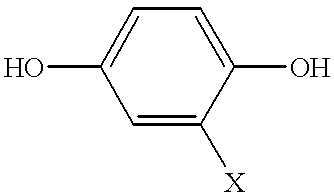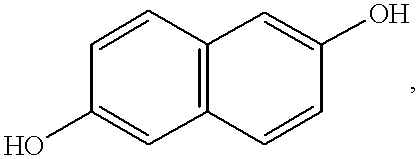Liquid crystal polymer film, laminate, method of making them and multi-layered parts-mounted circuit board
a liquid crystal polymer film and circuit board technology, applied in the direction of transportation and packaging, other domestic articles, synthetic resin layered products, etc., can solve the problems of liquid crystal polymer itself being thermally decomposed, prone to bulging, peeling and/or thermal deformation of the base film in the fpc board, and the relatively high molding temperature required accompanied by consumption of a relatively large amount of energies
- Summary
- Abstract
- Description
- Claims
- Application Information
AI Technical Summary
Benefits of technology
Problems solved by technology
Method used
Image
Examples
example 1
(1) In the first place, a thermotropic liquid crystal polyester containing 27 mol % of units from 6-hydroxy-2-naphthoic acid and 73 mol % of units from p-hydroxybenzoic acid was heat-kneaded through a single-screw extruder at a temperature of 280 to 300.degree. C. and was then extruded through an inflation die, 40 mm in diameter and 0.6 mm in slit size, to produce a liquid crystal polymer film having a thickness of 50 .mu.m The resultant liquid crystal polymer film had a melting point Tm of 280.degree. C. and a thermal deformation temperature Tdef of 230.degree. C.
(2) Also, using a copper foil (1 / 2 ounce copper foil based on the electrolytic method) of 18 .mu.m in thickness as the base material, this copper foil was thermally pressed to the above described film at 260.degree. C. to produce a laminate.
(3) In order to measure change of the melting point resulting from the heat treatment of this laminate, the fusion peak temperature TA of the film layer was measured at intervals of one...
example 2
The laminate and the film were obtained in a manner similar to Example 1, except that the laminate obtained as in (2) in Example 1 was fixed horizontally in the nitrogen atmosphere within a hot air dryer producing a hot gas of 260.degree. C. in such a positional relationship that the film surface was oriented upwards while the copper foil surface was oriented downwards, to cause the film surface temperature to be increased to 260.degree. C., and the heated laminate was heat-treated at this temperature for four hours and was, after the temperature had subsequently been increased to 300.degree. C., further heat-treated for six hours. Similar tests to those in Example 1 were conducted on the resultant laminate and the film, results of which are tabulated in Table 6.
example 3
The laminate and the film were obtained in a manner similar to Example 1, except that the laminate obtained as in (2) in Example 1 was fixed horizontally in the nitrogen atmosphere within a hot air dryer producing a hot gas of 260.degree. C. to cause the film surface temperature to be increased to 260.degree. C., and the heated laminate was heat-treated at this temperature for two hours and was, after the temperature had subsequently been increased to 290.degree. C., further heat-treated for six hours. Similar tests to those in Example 1 were conducted on the resultant laminate and the film, results of which are tabulated in Table 6.
PUM
| Property | Measurement | Unit |
|---|---|---|
| melting point Tm | aaaaa | aaaaa |
| melting point Tm | aaaaa | aaaaa |
| fusion peak temperature TA1 | aaaaa | aaaaa |
Abstract
Description
Claims
Application Information
 Login to View More
Login to View More - R&D
- Intellectual Property
- Life Sciences
- Materials
- Tech Scout
- Unparalleled Data Quality
- Higher Quality Content
- 60% Fewer Hallucinations
Browse by: Latest US Patents, China's latest patents, Technical Efficacy Thesaurus, Application Domain, Technology Topic, Popular Technical Reports.
© 2025 PatSnap. All rights reserved.Legal|Privacy policy|Modern Slavery Act Transparency Statement|Sitemap|About US| Contact US: help@patsnap.com



